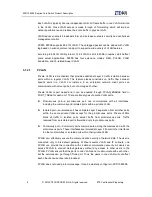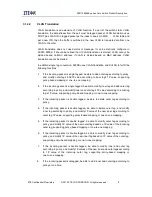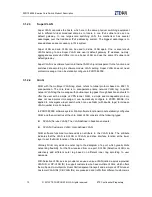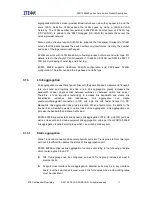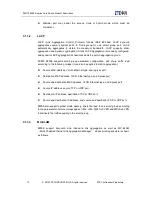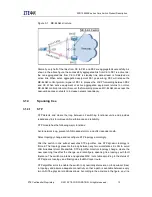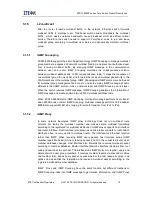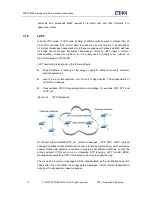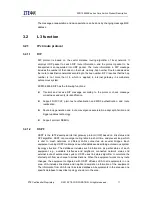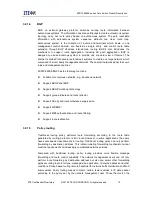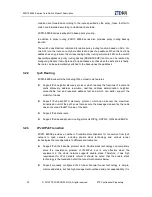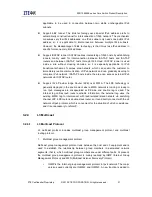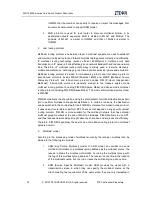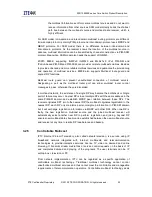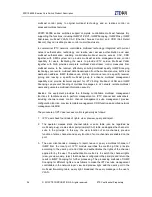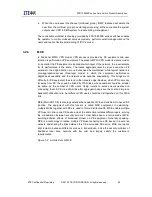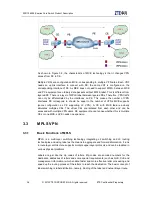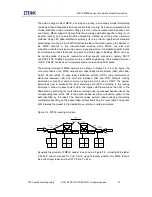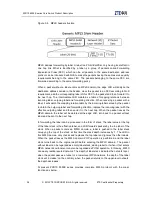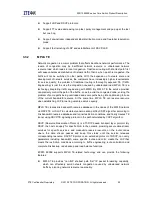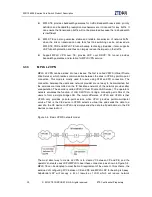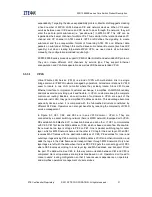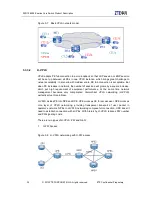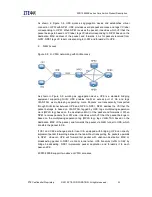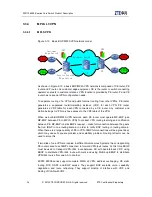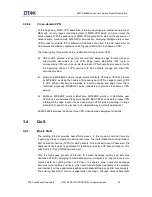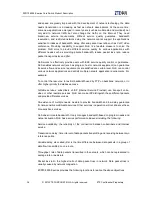
ZXR10 8900E series Core Switch Product Description
22
© 2013ZTE CORPORATION. All rights reserved.
ZTE Confidential Proprietary
IGMPv3 that the member can specify to receive or reject the messages from
some multicast sources to support SSM model.
ii.
MLD protocol is used for Ipv6 router to discover multicast listener in its
associated network segments. MLD is divided to MLDv1 and MLDv2. The
principle of MLDv1 is similar to IGMPv2 and that of MLDv2 is similar to
IGMPv3.
2.
cast routing protocol
Multicast routing protocol runs between layer 3 multicast equipments, used to establish
and maintain multicast router and forward multicast data packets correctly and efficiently.
IP multicast routing technology realizes efficient P2MP(point 2 multiple point) data
transmission in IP network; it can effectively save network bandwidth and reduce network
load. Therefore, IP multicast routing technology is widely used in resource discovery,
multimedia conference, data copying, real-time data transmission, game and emulation.
Multicast routing protocol is divided to intra-domain protocol and inter-domain protocol.
Inter-domain protocols include MBGP (Multicast BGP) and MSDP (Multicast Source
Discovery Protocol), and intra-domain protocol includes PIM (Protocol Independent
Multicast). Intra-domain protocol is generally divided to two classes: sparse mode
multicast routing protocol including PIM-SM (Sparse Mode) and dense mode multicast
routing protocol including PIM-DM (Dense Mode). The most useful multicast protocol now
is PIM-SM.
PIM-SM constructs the shared tree using the mechanism of multicast destination explicit
join to perform multicast data packet distribution. In certain conditions, the destination
can be switched to the shortest path tree. PIM-SM is irrelevant to unicast routing protocol.
It uses unicast route table to perform RPF check but not depend on any specific unicast
routing protocol. PIM-SM is more suitable for the multicast network that has potential
multicast group members at the end of WAN link. Besides, PIM-SM allows to use SPT,
and thus reduces network delay brought about by share tree and improves the efficiency.
Therefore, PIM-SM is generally the best choice of multicast routing protocol in multicast
network domain.
3.
Multicast model
According to the processing mode of multicast source by the receiver, multicast can be
divided to the following two models.
i.
ASM (Any Source Multicast) model: In ASM model, any sender can send
multicast information to a multicast group address as the multicast source; the
receiver obtains the multicast information by joining the multicast group with
the tag of this multicast group address. The receiver cannot know the location
of the multicast source, but can join or leave the multicast group at any time.
ii.
SSM (Source Specific Multicast) model: SSM provides the users with a
transmission service in which they can specify the multicast source at the
client, meeting the requirement of the users when they are only interested in
Summary of Contents for ZXR10 8900E series
Page 1: ...Operator Logo ZXR10 8900E series Core Switch Product Description ...
Page 2: ......
Page 10: ......

